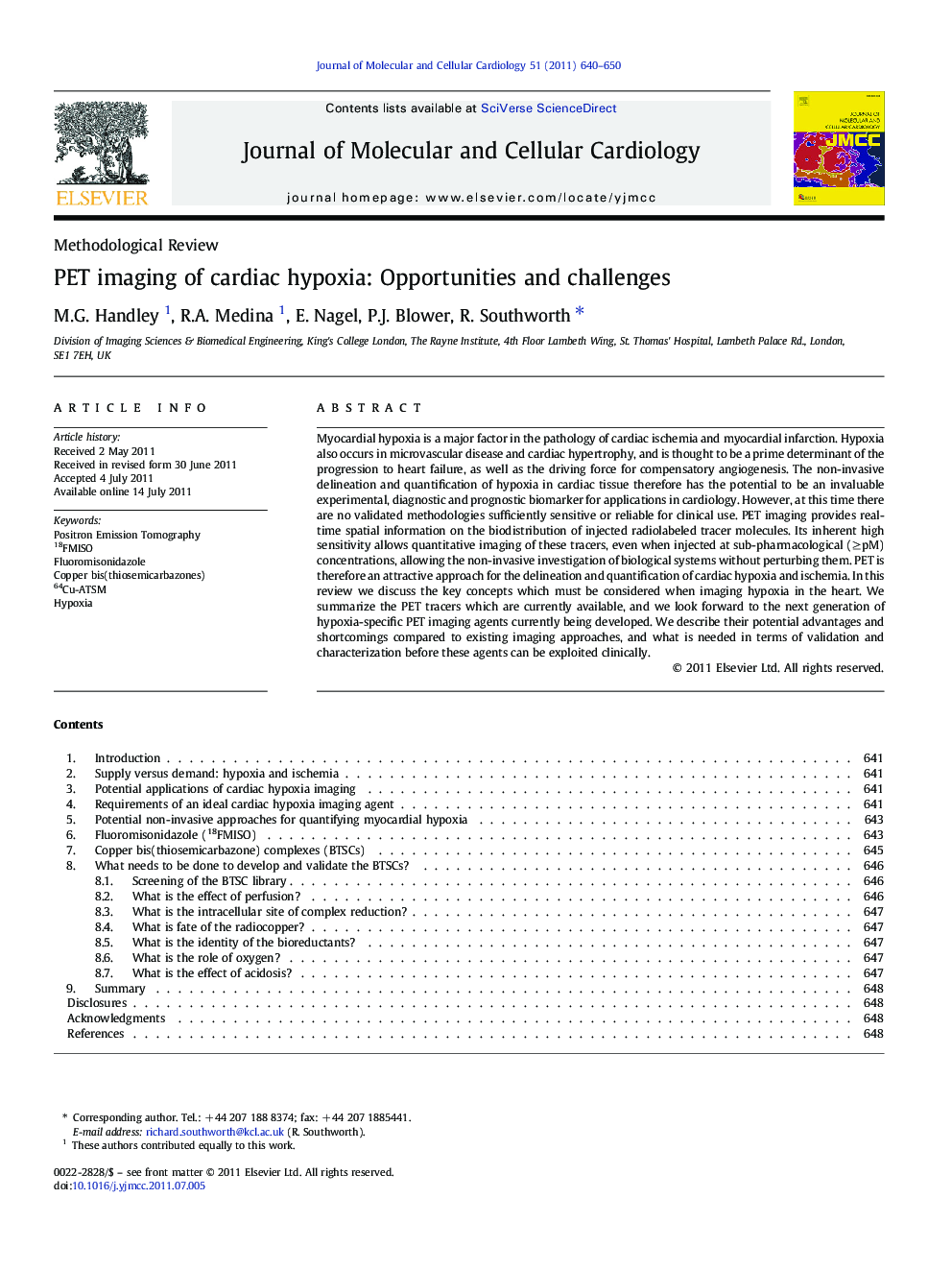| Article ID | Journal | Published Year | Pages | File Type |
|---|---|---|---|---|
| 2190738 | Journal of Molecular and Cellular Cardiology | 2011 | 11 Pages |
Myocardial hypoxia is a major factor in the pathology of cardiac ischemia and myocardial infarction. Hypoxia also occurs in microvascular disease and cardiac hypertrophy, and is thought to be a prime determinant of the progression to heart failure, as well as the driving force for compensatory angiogenesis. The non-invasive delineation and quantification of hypoxia in cardiac tissue therefore has the potential to be an invaluable experimental, diagnostic and prognostic biomarker for applications in cardiology. However, at this time there are no validated methodologies sufficiently sensitive or reliable for clinical use. PET imaging provides real-time spatial information on the biodistribution of injected radiolabeled tracer molecules. Its inherent high sensitivity allows quantitative imaging of these tracers, even when injected at sub-pharmacological (≥ pM) concentrations, allowing the non-invasive investigation of biological systems without perturbing them. PET is therefore an attractive approach for the delineation and quantification of cardiac hypoxia and ischemia. In this review we discuss the key concepts which must be considered when imaging hypoxia in the heart. We summarize the PET tracers which are currently available, and we look forward to the next generation of hypoxia-specific PET imaging agents currently being developed. We describe their potential advantages and shortcomings compared to existing imaging approaches, and what is needed in terms of validation and characterization before these agents can be exploited clinically.
► Molecular imaging of hypoxia is an attractive diagnostic and prognostic approach. ► PET has significant advantages in terms of sensitivity, speed and spatial resolution. ► Misonidazole based agents have poor first pass uptake and slow blood clearance. ► Cu-BTSC complexes are tuneable to different levels of hypoxia and have fast kinetics. ► CuATSM is the only BTSC which has been studied in the heart; more must be screened and validated.
